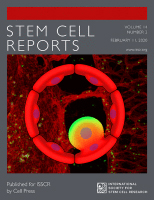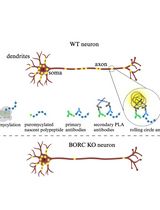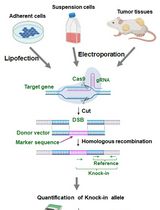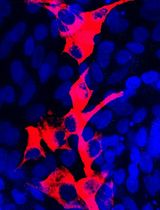- EN - English
- CN - 中文
Protocol for Isolation, Stimulation and Functional Profiling of Primary and iPSC-derived Human NK Cells
原代和iPSC来源的人类NK细胞的分离、刺激和功能分析方案
发布: 2020年12月05日第10卷第23期 DOI: 10.21769/BioProtoc.3845 浏览次数: 7294
评审: Giusy Tornillorozan romel attiliJia Wang
Abstract
Natural killer (NK) cells are innate immune cells, characterized by their cytotoxic capacity, and chemokine and cytokine secretion upon activation. Human NK cells are identified by CD56 expression. Circulating NK cells can be further subdivided into the CD56bright (~10%) and CD56dim NK cell subsets (~90%). NK cell-like cells can also be derived from human induced pluripotent stem cells (iPSC). To study the chemokine and cytokine secretion profile of the distinct heterogenous NK cell subsets, intracellular flow cytometry staining can be performed. However, this assay is challenging when the starting material is limited. Alternatively, NK cell subsets can be enriched, sorted, stimulated, and functionally profiled by measuring secreted effector molecules in the supernatant by Luminex. Here, we provide a rapid and straightforward protocol for the isolation and stimulation of primary NK cells or iPSC-derived NK cell-like cells, and subsequent detection of secreted cytokines and chemokines, which is also applicable for a low number of cells.
Keywords: CD56 (CD56)Background
Natural killer (NK) cells are part of the innate immune system and provide the first line defense against viral infections and malformations. In the human blood, two distinct NK cell populations can be identified based on CD56 and CD16 expression: CD56brightCD16+/- and CD56dimCD16+ NK cells (Melsen et al., 2016). CD56bright NK cells represent the minor subset (~10% of NK cells) and are known for their cytokine and chemokine secretion, but low cytotoxicity. In contrast, the CD56dim NK cells have high cytotoxic capacity. To test functional responses of NK cells in the absence of other cells, NK cells first need be enriched from peripheral blood mononuclear cells (PBMC) by negative enrichment. To study the production of effector molecules by the distinct NK cell populations upon stimulation, intra- and extracellular flow cytometry can be performed (Eberlein et al., 2010). However, this technique is limited to the number of effector molecule-specific antibodies available. Moreover, multiple samples are required to analyze the major effector molecules making this technique less suitable for a low number of cells. As an alternative, the distinct NK cell subsets can be sorted and stimulated. Cytokines and chemokines can be subsequently measured in the supernatant by Luminex (Lugthart et al., 2016). The advantages are: 1) distinct NK cell subsets cannot influence each other, 2) the supernatant can be harvested at multiple timepoints, which allows studying kinetics of the same cells, 3) > 25 effector molecules can be studied at once. Moreover, since no cell harvesting and fixation is required, cells could be stored or used for further experiments.
As an alternative for primary NK cells, NK cells can be derived from human iPSC. The different protocols used are based on the stepwise differentiation of human iPSC into mesoderm, hemogenic or hematopoietic progenitor cells, and subsequently into CD56+ NK cells. CD34+CD45+ hematopoietic progenitors or CD34+CD31+ hemogenic progenitors are generated using either stromal cells like OP9 or embryoid bodies in the presence of hematopoietic and vascular growth factors (Knorr et al., 2013). The CD34+ progenitors are further differentiated towards NK cells using a cytokine cocktail in either the presence or absence of OP9-DL1 stroma cells (Knorr et al., 2013; Zeng et al., 2017). Cytokine cocktails used contain SCF, FLT3L, IL-3, IL-15 and IL-7 in the absence of OP9-DL1 (Knorr et al., 2013), or SCF, FLT3L, and IL-7 when co-culturing on OP9-DL1 cells (Zeng et al., 2017). The latter conditions simultaneously generate T cells (Themeli et al., 2013 and 2020), however, substitution of IL-7 by IL-15, or the addition of IL-15 results in much purer (> 99%) CD56+ NK cell populations (Zeng et al., 2017). In our hands, CD56+ NK cells generated from iPSC best resemble primary CD56bright NK cells (Themeli et al., 2020). If the generation of T cells is hampered, by example in the case of RAG2 deficiency, previously undescribed small populations with NK cell-specific cytokine secretion profiles can be found (Themeli et al., 2020). To functionally profile rare NK cell-like populations a sensitive and easy-to-use protocol is paramount. Here we describe such a protocol that allows a rapid assessment of NK cell-specific secretion profiles using as few as 10,000 cells.
Materials and Reagents
NK cell isolation
General
Laboratory disposables:
Pipettes
15 ml tubes
50 ml tubes (Greiner, Cellstar, catalog number: 227261 )
Pasteur pipettes
Eppendorf tubes (Eppendorf, catalog number: 0030121023 )
50 ml Syringe (Becton Dickinson Medical, catalog number: BD 300865 ), 10 ml Syringe (Becton Dickinson Medical, catalog number: BD 307736 )
0.22 µm syringe filter (Whatman FP30 CA-S, catalog number: 10462300 )
Syringe needle (Becton Dickinson MICROLANCE 3, 19 G x 40 MM, catalog number: 301500 )
96-wells round bottom plate non-sterile (Corning, catalog number: 3799 )
Micronic tubes (NBS scientific, catalog number: MP32022 )
5 ml round-bottom polystyrene tubes (Corning, Falcon, catalog number: 352052 )
PBS (Fresenius Kabi, catalog number: 8717973380153 ), 4°C
Bürker-Türk counting chamber (VWR, catalog number: HECH40444702 )
Türk′s solution (Merck, Sigma-Aldrich, catalog number: 1092770100 )
Bovine serum albumin (BSA) (Merck,Sigma-Aldrich, catalog number: A9576 ), 4 °C
EDTA (Merck, Calbiochem, catalog number: 324503, Molecular weight 372.24 ), RT
Distilled water (Aqua BBraun, B Braun, catalog number: 0082479E )
NaOH (Merck, catalog number: 106498 )
Fetal Calf Serum (FCS, heat inactivated for 30 min at 56 °C to inactivate complement) (Merck, Sigma-Aldrich, catalog number: F7524 ), -20°C
EDTA solution 0.5 M (see Recipes), RT
AIMV medium (Thermo Fisher Scientific, Gibco, catalog number: 31035025 ), 4 °C
Collection medium (see Recipes), 4 °C
Antibody for cell sorting (see Recipes), 4 °C
CD56 clone N901 (ECD) (Beckman Coulter, for instance, catalog number: A82943 ), 4 °C or clone 5.1H11 (Biolegend, for instance, catalog number: 362550 ), 4°C or clone B159 (Becton Dickinson, for instance, catalog number: 560361 ), 4 °C
Only required for primary NK cell isolation
Pre-separation filters 30 µm (Miltenyi, catalog number: 130-041-407 ), RT
MACS columns MS or LS (Miltenyi, catalog number: 130-042-201 or 130-042-401 ), RT
Ficoll Paque Plus (Merck, Sigma, catalog number: GE17-1440-02 ), RT, dark
RPMI 1640 Medium (Thermo Fisher Scientific, Gibco, catalog number: 72400054 ), 4 °C
Human serum albumin 200 g/L (Sanquin, Albuman, catalog number: 8717185830897 ) 4 °C
Penicillin-Streptomycin 100x (Merck, Sigma-Aldrich, catalog number: P0781 ), -20 °C
NK cell isolation kit human (Miltenyi, catalog number: 130-092-657 ), 4 °C
CD33 clone P67.6 (PE) (Becton Dickinson, for instance, catalog number: 345799 ), 4 °C
CD14 clone M5E2 (PE-Cy7) (Becton Dickinson for instance, catalog number: 557742 ), 4 °C
CD3 clone UCHT1 (BV421) (Becton Dickinson, for instance, catalog number: 562426 ), 4 °C
CD19 clone SJ25C1 (BV510) (Becton Dickinson, for instance, catalog number: 562947 ), 4 °C
MACS buffer (see Recipes), 4 °C
Dilution medium (see Recipes), 4 °C
Wash medium (see Recipes), 4 °C
Only required for iPSC-derived NK cell isolation
30 µm CellTrics filter (Sysmex, catalog number: 04-004-2326 )
CD7 clone 124-1D1 (eBioscience, for instance, catalog number: 25-0079-41 ), 4 °C or clone 4H9 (Becton Dickinson, for instance, catalog number: 347483 ), 4 °C or clone M-T701 (Becton Dickinson, catalog number: 561934 ), 4 °C
Laboratory disposables:
Pipettes
15 ml tubes
50 ml tubes
Eppendorf tubes
96-well round bottom plate (Greiner, catalog number: 650185 )
AIMV medium (Thermo Fisher Scientific, Gibco, catalog number: 31035025 )
Fetal Calf Serum (FCS, heat inactivated for 30 min at 56 °C to inactivate complement) (Merck, Sigma-Aldrich, catalog number: F7524 ), -20 °C
Recombinant human IL-12 (Peprotech, catalog number: 200-12 ), -20 °C
Recombinant human IL-15 (Peprotech, catalog number: 200-15 ), -20 °C
Recombinant human IL-18 (MBL International, catalog number: B001-5 ), -20 °C
Interleukin mix (see Recipes)
Stimulation
Laboratory disposables:
Pipettes
15 ml polypropylene tubes
0.5 ml polypropylene tube
Reagent reservoirs
Aluminium foil
Sealing tape (for instance, Merck, Greiner, catalog number: A5596-100EA )
Ice
Paper towels
Bio-Plex Pro Human Cytokine 27-plex Immunoassay (Bio-Rad, catalog number: M50-0KCAF0Y ), 4 °C
Functional profiling
Equipment
Laminar flow cabinet for sterile work (biosafety level II) (Euroflow EF4, CleanAir by Baker)
Tube rack to hold 15, 50 ml tubes (for instance, VWR, catalog numbers: 89215-778 and 89215-778 )
Micropipettes (P10, P100, P1000) (for instance, Gilson, catalog number: F167380 )
12 channel multichannel pipette (for instance, Eppendorf, catalog number: 3125000060 )
Table top centrifuge with adapters for plates and for 15 ml and 1.5 ml tubes (Eppendorf, model: 5810 R )
CO2 Incubator (at 5% CO2 and 37 °C) (for instance, Panasonic, model: MCO 170-AIC )
Magnetic stirrer (for instance, VWR, catalog number: 89215-778 )
FACS Aria cell sorter (Becton Dickinson, Aria I, II, III) but any equivalent fluorescence-activated cell sorter should work
MiniMACS or MidiMACS separator (Miltenyi, catalog number: 130-042-102 or 130-042-302 , respectively)
MACS MultiStand (Miltenyi, catalog number: 130-042-303 , RT)
Autoclave (for instance, VWR, Ward’s, catalog number: 470230-598 )
Vortex (for instance Scientific Industries, model: Vortex Genie 2, catalog number: 200-SI-0236 )
Bio-Plex 200 system (Bio-Rad, for instance, catalog number: 171000201 )
Bio-Plex handheld magnetic washer (Bio-Rad, catalog number: 171020100 )
Plate shaker (for instance, Biosan, model: PSU-2T )
Software
Diva software (Becton Dickinson, v6.0 or later, 2007 or later)
Bio-Plex Manager software (Bio-Rad, v6.2, 2018)
Procedure
文章信息
版权信息
© 2020 The Authors; exclusive licensee Bio-protocol LLC.
如何引用
Melsen, J., Themeli, M., van Ostaijen-ten Dam, M., van Beelen, E., Lugthart, G., Hoeben, R., Schilham, M. and Mikkers, H. (2020). Protocol for Isolation, Stimulation and Functional Profiling of Primary and iPSC-derived Human NK Cells. Bio-protocol 10(23): e3845. DOI: 10.21769/BioProtoc.3845.
分类
免疫学 > 免疫细胞功能
干细胞 > 多能干细胞 > 细胞诱导
细胞生物学 > 细胞分离和培养 > 细胞分化
您对这篇实验方法有问题吗?
在此处发布您的问题,我们将邀请本文作者来回答。同时,我们会将您的问题发布到Bio-protocol Exchange,以便寻求社区成员的帮助。
提问指南
+ 问题描述
写下详细的问题描述,包括所有有助于他人回答您问题的信息(例如实验过程、条件和相关图像等)。
Share
Bluesky
X
Copy link












